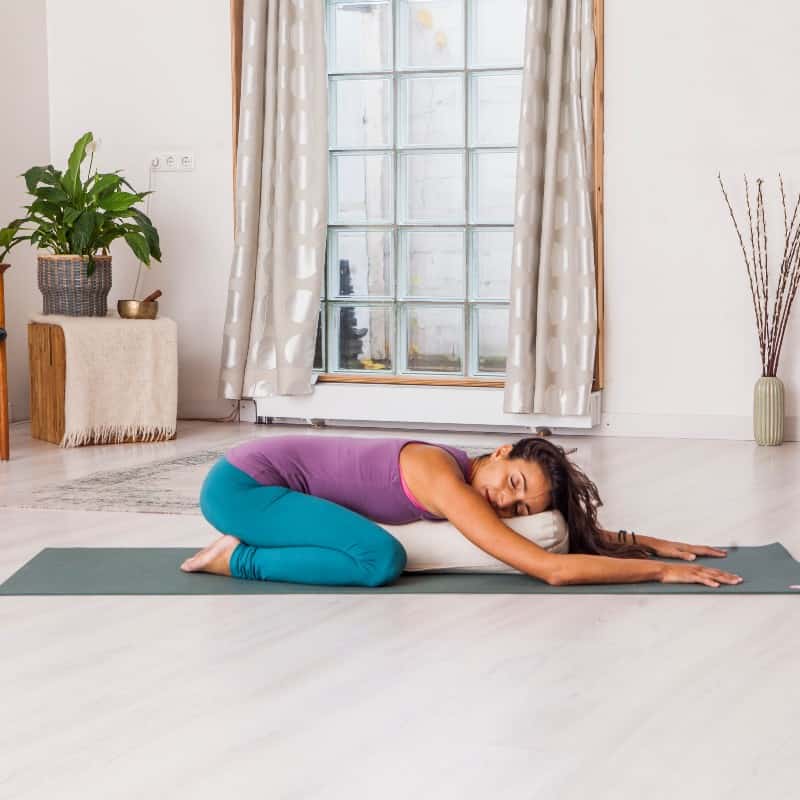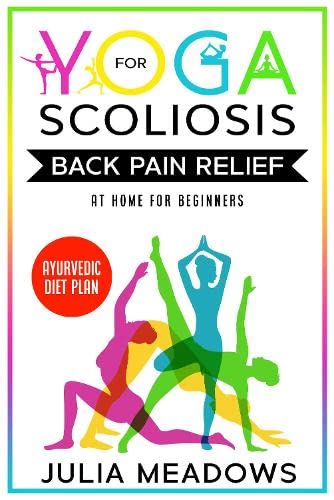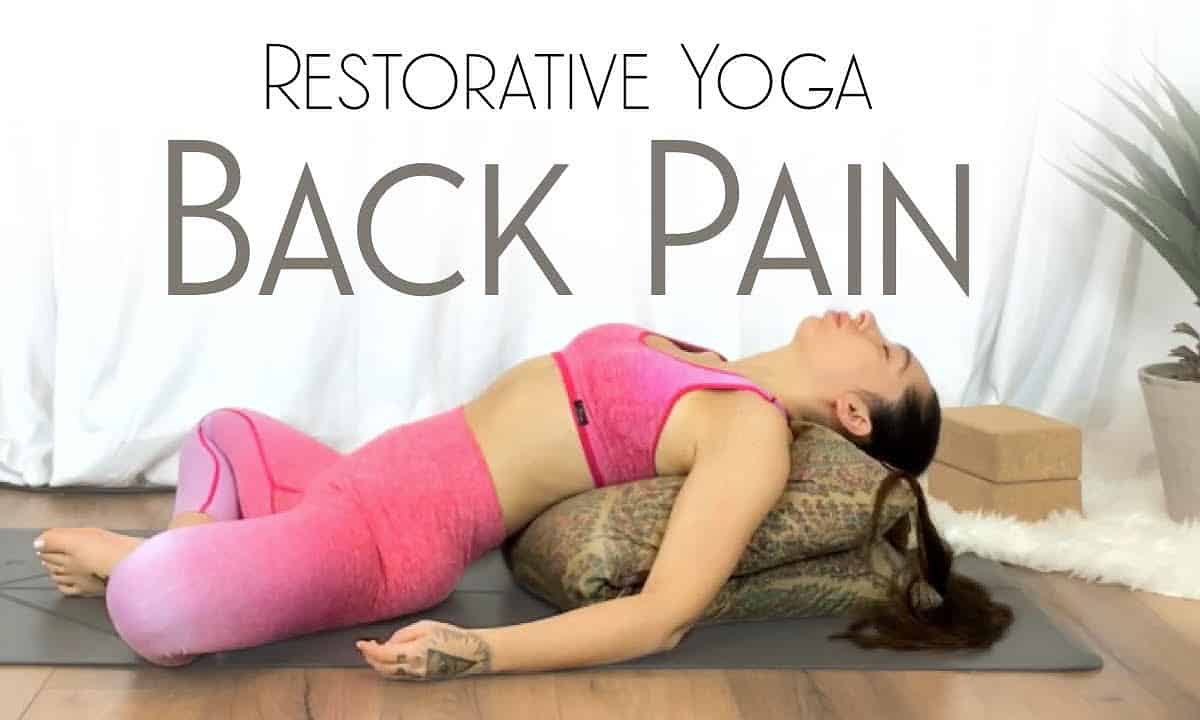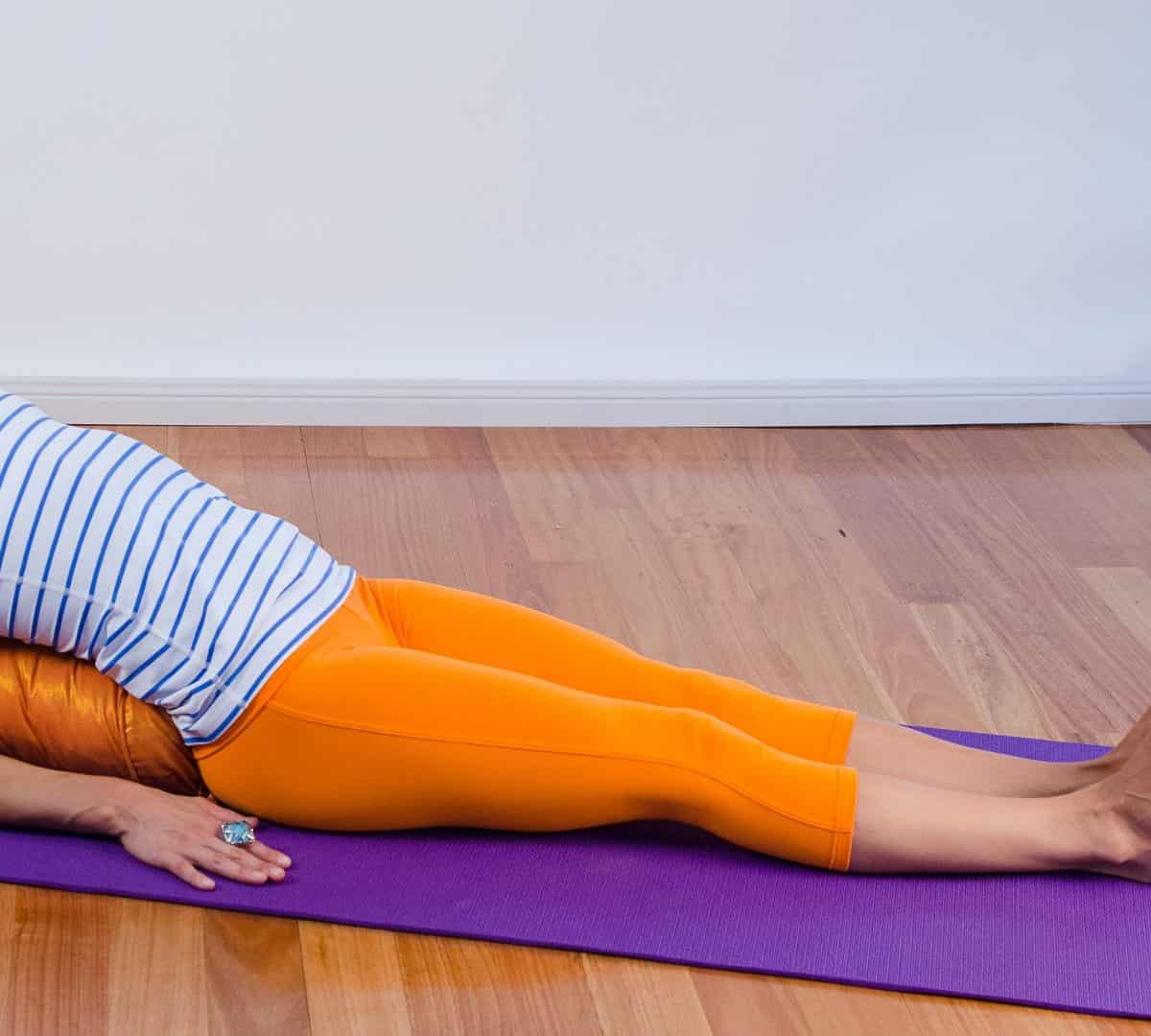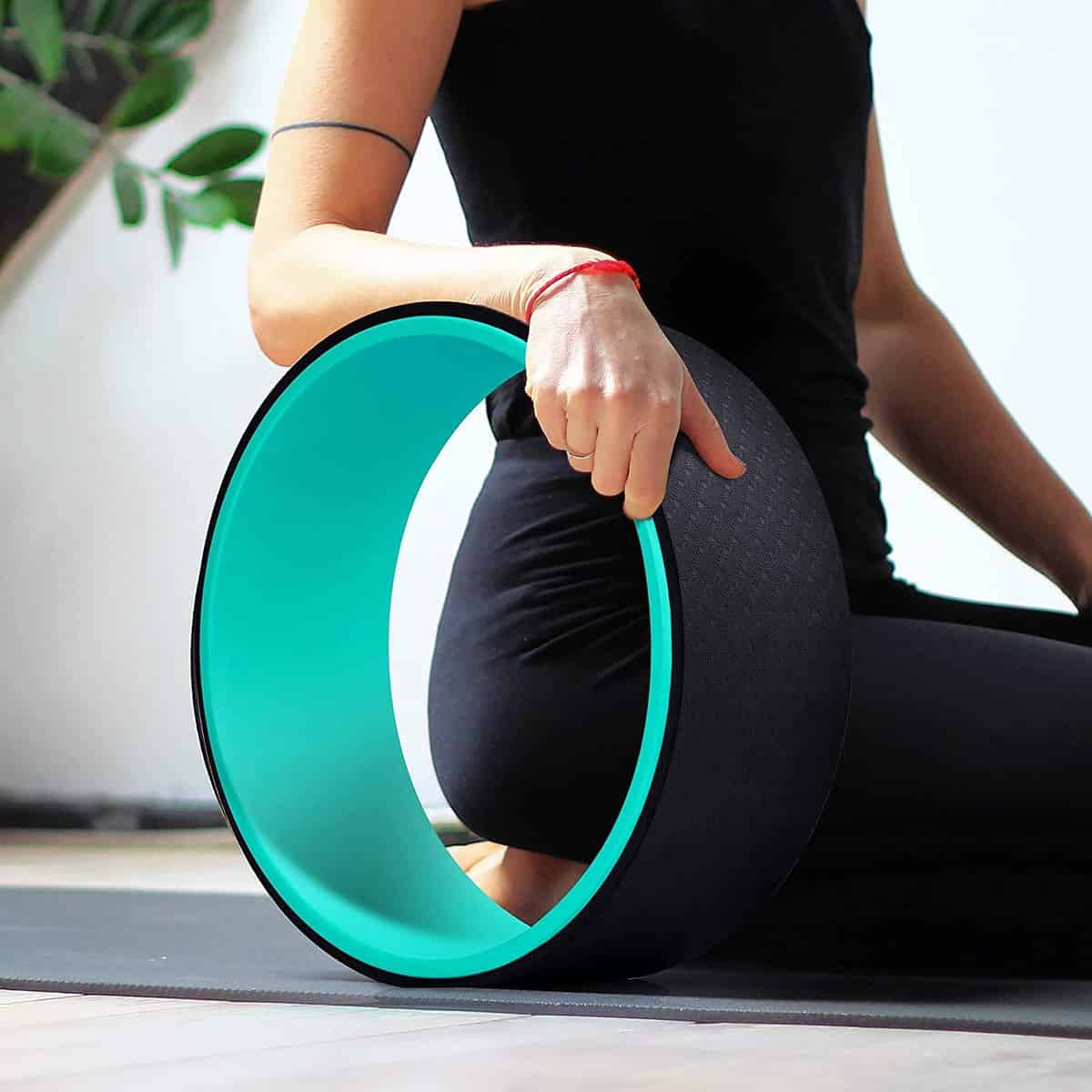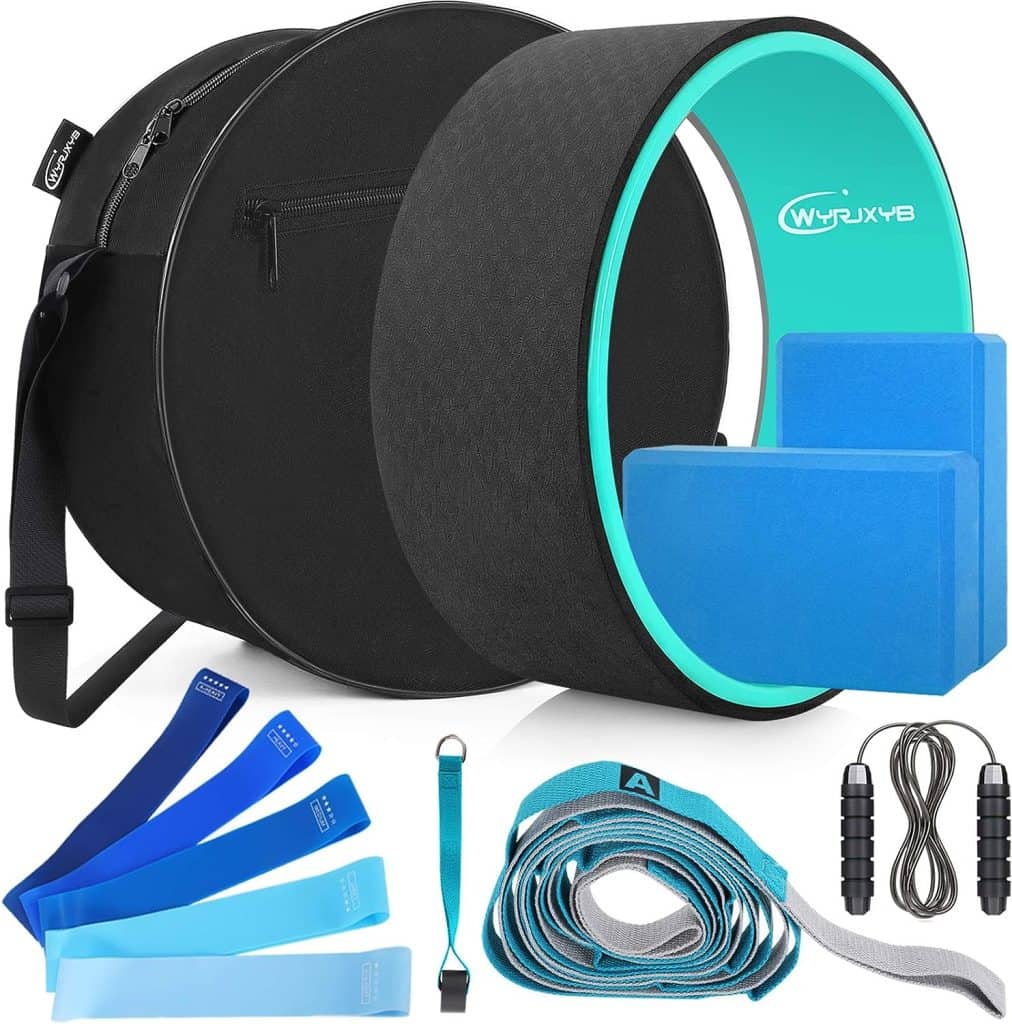If you’re suffering from back issues, restorative yoga for back pain may be just what you need to find relief. This gentle form of yoga focuses on relaxation and deep stretching, making it ideal for those with back pain.
In this article, we’ll explore what restorative yoga is, the benefits it offers for back pain, specific poses you can try, tips for practicing safely, and when it’s time to seek professional help.
What is restorative yoga?
Restorative yoga is a therapeutic practice that involves holding gentle poses for an extended period of time, typically ranging from 5 to 20 minutes.
The aim is to relax the body and mind, allowing for deep release and restoration. Unlike more active forms of yoga, restorative yoga focuses on stillness and support, using props such as blankets, bolsters, and blocks to provide comfort and stability.
Benefits of restorative yoga for back pain
Relaxation and stress reduction
One of the key benefits of restorative yoga is its ability to induce a state of deep relaxation. By slowing down and focusing on the breath, restorative yoga activates the parasympathetic nervous system, which helps to counteract the effects of stress and tension.
This relaxation response can be particularly beneficial for individuals experiencing back pain, as stress and tension often contribute to muscle tightness and discomfort.
Improved flexibility and posture
Restorative yoga poses gently stretch and lengthen the muscles, promoting increased flexibility and improved posture. Many back pain sufferers experience tightness in the hips, hamstrings, and lower back, which can exacerbate discomfort.
By regularly practicing restorative yoga, you can gradually release tension in these areas, leading to greater ease of movement and better alignment.
Increased blood flow and circulation
When we experience pain, blood flow to the affected area can be compromised. Restorative yoga poses, such as Legs-Up-The-Wall Pose, promote healthy circulation by allowing blood to flow more freely throughout the body. This increased blood flow delivers oxygen and nutrients to the muscles, helping to reduce inflammation and promote healing.
Enhanced body awareness and mindfulness
Restorative yoga encourages a deep connection between the body and mind. By practicing mindfulness and paying attention to physical sensations, you can develop a greater awareness of your body’s needs and limitations. This heightened body awareness can help you make more informed choices about how to move and position yourself in daily life, reducing the risk of further back pain.
Specific restorative yoga poses for back pain
Child’s Pose
Child’s Pose is a gentle resting pose that stretches the lower back and hips. To practice this pose, start by kneeling on the floor with your knees wide apart and your big toes touching.
Sit back on your heels and fold forward, resting your forehead on the mat or a bolster. Extend your arms forward or alongside your body, whichever feels more comfortable.
Stay in this pose for several minutes, focusing on deep breathing and allowing your back to relax and release.
Supported Bridge Pose
Supported Bridge Pose is a backbend that helps to open the chest and stretch the front of the body while gently lengthening the spine. To practice this pose, lie on your back with your knees bent and your feet flat on the floor.
Place a bolster or folded blanket under your sacrum, the bony part at the base of your spine. Allow your arms to rest alongside your body, palms facing up. Stay in this pose for 5 to 10 minutes, focusing on deep belly breathing and allowing your back to soften and release.
Legs-Up-The-Wall Pose
Legs-Up-The-Wall Pose is a restorative inversion that promotes healthy circulation and relieves tension in the lower back. To practice this pose, sit sideways next to a wall with your hip touching the wall.
Lie back and swing your legs up the wall, keeping your arms relaxed by your sides. You can place a folded blanket or bolster under your hips for added support. Stay in this pose for 10 to 15 minutes, focusing on slow, deep breaths and allowing your back to relax and unwind.
Supported Fish Pose
Supported Fish Pose gently opens the chest and stretches the front of the body, relieving tension in the upper back and shoulders. To practice this pose, sit on a bolster or folded blanket with your legs extended in front of you.
Slowly lower your back onto the bolster, allowing your head and shoulders to rest on the floor. You can place a folded blanket under your head for added support. Stay in this pose for 5 to 10 minutes, focusing on deep breathing and allowing your chest to expand and soften.
Reclining Bound Angle Pose
Reclining Bound Angle Pose is a restorative hip opener that helps to release tension in the lower back and hips. To practice this pose, lie on your back with your knees bent and the soles of your feet together, allowing your knees to fall open to the sides.
Place a bolster or folded blanket under your knees for support. Rest your arms alongside your body, palms facing up. Stay in this pose for 5 to 10 minutes, focusing on slow, deep breaths and allowing your hips and lower back to relax.
Tips for practicing restorative yoga for back pain
Use props for support
Props such as blankets, bolsters, and blocks are essential for practicing restorative yoga safely and comfortably. Use them to support your body and create a sense of ease in each pose. Experiment with different props and placements to find what works best for you.
Focus on deep breathing and relaxation
The breath is a powerful tool for relaxation and pain relief. As you practice restorative yoga, focus on slow, deep belly breathing. Allow each exhale to release tension and each inhale to bring nourishment and healing to your body.
Listen to your body and modify poses as needed
Every body is unique, and what feels good for one person may not work for another. Listen to your body’s signals and modify poses as needed. If a pose causes pain or discomfort, back off or try a different variation that feels more supportive.
Consistency is key
To experience the full benefits of restorative yoga for back pain, consistency is key. Aim to practice regularly, even if it’s just for a few minutes each day. Over time, you’ll likely notice a reduction in pain and an increase in overall well-being.
When to seek professional help
While restorative yoga can be incredibly beneficial for back pain, it’s important to know when it’s time to seek professional help.
If your back pain is severe, persistent, or accompanied by other concerning symptoms, it’s best to consult with a healthcare professional or a qualified yoga therapist. They can provide a proper diagnosis and guide you in developing a safe and effective yoga practice.
Conclusion
Restorative yoga offers a gentle and effective approach to relieving back pain. By practicing specific poses and incorporating relaxation techniques, you can reduce muscle tension, improve flexibility, and promote overall well-being. Remember to listen to your body, use props for support, and seek professional help if needed. With regular practice and patience, restorative yoga can help you find relief and restore balance to your body and mind.
Originally posted 2023-01-30 17:25:23.

